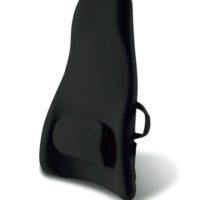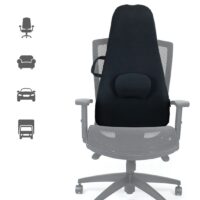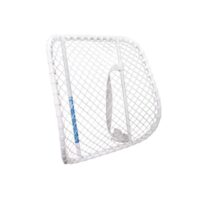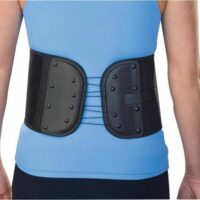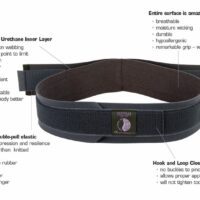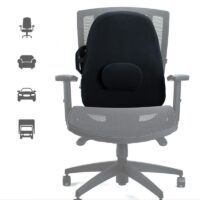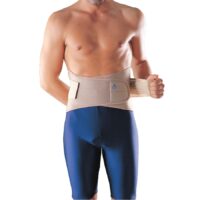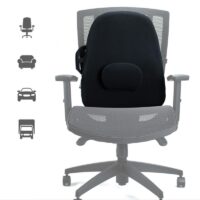
Back Pain: Causes, Remedies, and Prevention
What is Back Pain?
Back pain, particularly in the lower lumbar region, affects many Australians throughout their lives. Typically, injuries or strains to the muscles, ligaments, or joints of the lower spine cause this pain. Such injuries might arise from sudden actions, like lifting heavy items, or from prolonged poor habits, such as slouching. Seeking early diagnosis and treatment from a physiotherapist can significantly reduce the symptoms and ward off future episodes. Moreover, adopting preventative steps, including maintaining good posture and doing specific exercises, can decrease the risk of experiencing back symptoms.
What Triggers Back Pain?
Musculoskeletal problems like muscle strains, ligament sprains, disc bulging and joint dysfunction frequently result in lumbar pain. Traumatic incidents, like hefting weighty loads, or prolonged stress injuries can also lead to pain. To prevent and recover from pain, seek early diagnosis and treatment from a physiotherapist. Additionally, adopt measures to fend off future episodes.

Frequent Causes
Muscle & Ligament Strains
Overworking or tiring the muscles in the lower back, especially from heavy lifting or bad postures, leads to back pain. Weak back muscles might also reduce joint stabilisation, causing further issues. Physiotherapists recommend proper posture and exercises to relieve pain and prevent future muscle-related back pain.
Ligaments, which connect bones and restrict movement, can tear if stretched excessively, causing pain and swelling. Common reasons for such injuries include awkward lifting, sporting mishaps, or car accidents. Physiotherapy effectively treats ligament injuries, speeding up healing and relieving painful symptoms.
Read more: Back Muscle Pain
Bulging Discs
Damage to the intervertebral discs in the spine can cause a bulging disc injury. When a disc bulges, it can press on spinal nerves, resulting in back pain, muscle spasms, or even numbness. Repetitive stress, poor posture, or trauma can cause a bulging disc. A physiotherapist can provide guidance on managing this condition.
Read more:
Bone Injuries:
High trauma or low bone density conditions like osteoporosis can lead to spine fractures.
Read more: Osteoporosis
Poor Posture:
Slouching or maintaining an improper posture can strain the spine, leading to back symptoms.
Read more: Back Posture Explained
How Can We Prevent Back Injury?
Engaging in regular exercise and keeping the spine and core muscles strong and flexible can lower the risk of injury. Adopting a proper posture and using safe lifting methods also prove beneficial. For tailored advice on posture and movement, consider consulting a physiotherapist.
Back Pain Treatment
When addressing lower spine injuries, the treatment goals set by a physiotherapist might vary based on the specific diagnosis. However, common objectives include reducing pain, enhancing mobility, strengthening spine-supporting muscles, educating on proper posture, and addressing root causes of the symptoms.
Treatment Phases:
- Pain Relief & Protection: The primary objective is managing acute symptoms. Physiotherapists often use tools like ice therapy, electrotherapy, acupuncture, supportive taping, and massage. Some people also find non-steroidal anti-inflammatory drugs (NSAIDs) like ibuprofen helpful.
- Restoring Normal ROM & Strength: As pain subsides, physiotherapists work on restoring spine motion, muscle tension, strength, balance, and proper gait. They might also introduce core stability exercises to enhance control and stability of the lower spine and pelvis.
- Full Function Restoration: Depending on personal goals, whether it’s a casual walk or an intense sport, physiotherapists tailor the rehabilitation to ensure safe return to desired activities.
- Preventing a Recurrence: To avoid recurrent back episodes, it’s crucial to continue with a version of the exercises introduced during treatment.
Other Treatment Options:
Physiotherapists might suggest other treatments like manual therapy, exercises, ice, ultrasound, TENS, and posture education. Other options include back braces, dry needling, acupuncture, massage, TENS machines, posture supports, and even weight loss strategies for those who might benefit.
Expected Results from Back Pain Treatment:
Recovery from back injury generally spans 4 to 6 weeks. However, individual experiences may vary. Adhering to the treatment plan set by your physiotherapist remains crucial for a successful recovery.

Conclusion
Back pain, a common ailment experienced by many Australians, often stems from a variety of causes, from muscle strains to poor posture. While it can be debilitating, understanding its origins and seeking timely intervention from professionals, especially physiotherapists, can make a world of difference. Adopting preventive measures and maintaining an active lifestyle, coupled with good posture, can significantly reduce the risk of developing back symptoms. Remember, your back supports you in every endeavour; give it the care and attention it rightly deserves. If you ever experience persistent back issues, seeking professional advice early can set you on a path to a pain-free life.
Related Articles
- Back Pain Physiotherapy: Your Guide To What To Expect – This article provides a comprehensive guide to what one can expect during physiotherapy for back pain.
- Sudden Back Pain Explained: Causes & Physiotherapy Solutions – It discusses into the causes of sudden back pain and offers physiotherapy solutions.
- Lower Back Pain – Understanding & Managing – This guide explores different factors contributing to lower back pain and offers management tips.
- Effective Back Exercises And Core Strength: Physio Insights – Focuses on back exercises and core strength as key elements in managing lower back pain.
- Core Stability Training For Effective Low Back Pain Relief – Highlights the importance of core stability training in relieving low back pain.
- What Causes Back Pain For No Reason? – Addresses unexplained back pain and how physiotherapy can assist in managing it.
- Core Stability: A Physiotherapist’s Guide For Spinal Health – Provides a physiotherapist’s perspective on core stability for spinal health.
- Back Posture Correction – Discusses how posture correction can effectively manage back pain and injury.
- Spinal Stenosis – Offers insights into spinal stenosis and its connection to lower back pain.
- Posture Exercises – Highlights the importance of posture exercises in preventing and alleviating back pain-related issues.
What Causes Lower Back Pain?
Introduction
Lower back pain is a widespread issue in Australia, stemming from diverse conditions. As physiotherapists, we often encounter various causes of this pain. This guide aims to shed light on these causes and provide valuable insights for effective management.
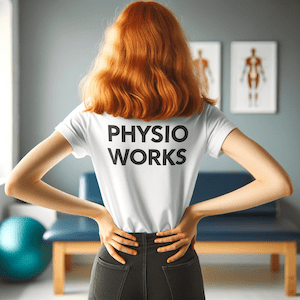

Muscle-Related Injuries
Muscle injuries are a predominant cause of lower back pain, including:
- Back Cramps and Muscle Pain: Typically resulting from overuse or strain.
- Core Stability Deficiency: Weak core muscles can lead to increased back strain.
- DOMS (Delayed Onset Muscle Soreness): Soreness affecting back muscles post-exercise.
Recent research underscores the importance of regular exercise and core strengthening in preventing these injuries.
Bone-Related Injuries
Bone health is crucial in lower back pain, encompassing conditions like:
- Spondylosis: Degenerative spine conditions.
- Spondylolysis or Stress Fracture: Common in athletes, such as cricket bowlers.
- Spondylolisthesis: Occurs when a vertebra slips over another.
- Osteoporosis: Causes bones to weaken, increasing fracture risk. Advancements in bone density scanning have improved early detection and management.
- Scheuermann’s Disease: Affects spinal bone growth in teenagers.
- Scoliosis: An abnormal curvature of the spine causing pain.
- Spinal Stenosis: A narrowing of the spinal canal leading to nerve compression.
Disc-Related Injuries
Spinal discs are vital for spinal health:
- Bulging and Disc Protrusions: These discs protrude or "slip" and can press on nerves.
- Herniated Disc: A more severe form of disc protrusion.
- Degenerative Disc Disease: Age-related disc wear and tear.
Minimally invasive surgical techniques have transformed the treatment of severe disc-related injuries where physiotherapy and other non-operative options fail to improve.
Back Joint Injuries
- Facet Joint Pain: Arises from arthritis or stress on these spinal joints.
Nerve-Related Injuries
Nerve issues can lead to:
- Nerve Pain and Pinched Nerves: Caused by spinal nerve compression from disc bulging or arthritic changes.
- Sciatica: Irritation of the sciatic nerve.
Physiotherapy and newer medications have been effective in managing these conditions. Some will require injection therapies or surgery.
Pelvis-Related Injuries
Pelvic issues also contribute to lower back pain:
- Sacroiliac Joint Pain: Involving joints connecting the spine to the pelvis.
- Piriformis Syndrome: Where the piriformis muscle irritates the sciatic nerve.
Pregnancy-Related Pain
- Pregnancy Back Pain: Often due to increased back strain during pregnancy. Prenatal physiotherapy programs are beneficial.
Systemic Diseases
Systemic diseases like Ankylosing Spondylitis, Fibromyalgia and Rheumatoid Arthritis can cause back pain.
Recent Research and Advancements
Current research emphasises a holistic approach to treating lower back pain. Techniques like yoga and Pilates, alongside traditional physiotherapy, and conservatively progressed gym programs show significant relief. The role of diet in managing weight and inflammation is increasingly recognised.
Best Treatments for Lower Back Pain
Treatment varies but often includes:
- Physiotherapy
- Pain management
- Strength and flexibility exercise programs
- Ergonomic adjustments
- Surgical interventions for severe cases
Conclusion
Lower back pain is a significant health concern in Australia. Understanding its causes and seeking professional physiotherapy advice can greatly improve life quality. Remember, early intervention is key for an effective recovery.
What to Do?
If you're experiencing lower back pain, it's vital to consult a physiotherapist or doctor. They can provide an assessment and customised treatment plan based on your specific condition.
Back Pain FAQs & Products
Your Comprehensive Guide to FAQs, Causes, and Relief
Experiencing back pain and looking for answers? Our comprehensive FAQ section covers everything you need to know about back pain - from common causes and symptoms to effective treatments.
Click the links to our detailed articles to understand better and manage your back pain. Explore links to related topics like 'Severe Back Pain Management', 'Posture Improvement Techniques', and 'Physiotherapy for Chronic Back Issues' for a holistic approach to your spinal health."
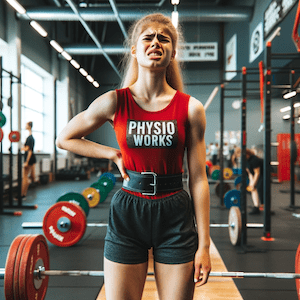

What Causes Back Pain?
Discover the various factors behind back pain, including muscle strains, herniated discs, and more.
- Most Common Causes of Back Pain
- Causes of Lower Back Pain
- Causes of Upper Back Pain
- Understanding Herniated Discs
- Osteoarthritis and Back Pain
- Back Stress Fractures
- Pregnancy Back Pain
How Can I Relieve Back Pain?
Explore treatments ranging from physiotherapy to exercises, tailored to alleviate back pain.
- Best Treatment for Lower Back Pain
- Physiotherapy for Back Pain
- Exercises for Back Strength
- Could Ultrasound Physiotherapy Help You Beat Back Pain?
- Benefits of Back Massage
Can Back Pain Be Prevented?
Learn how to prevent back pain through healthy habits and proper body mechanics.
- Preventing Back Pain Tips
- Proper Back Posture Guidelines
- Regular Exercise Routines for Back Pain
- Gym Back Exercises
When Should You See a Physio or Doctor for Back Pain?
Understand when it's crucial to seek professional medical advice for back pain.
- Severe Back Pain? Causes, Symptoms & Treatment
- Warning Signs of Severe Back Conditions
- Physiotherapy Consultation for Back Pain: What to Expect?
Repeated Bouts & Incidental Back Pain FAQs
Addressing frequently occurring and sudden back pain incidents.
- Causes of Recurrent Back Strains
- Understanding Sudden Back Pain
- What Causes Back Pain for No Reason?
- What Causes Repeat Low Back Strains & Sprains?
Youth Back Pain FAQs
Focusing on the prevention and management of back pain in teenagers.
Back Pain Exercises FAQs
Discover effective exercises and tools for back pain relief.
- Core Strengthening Exercises
- Exercise Balls for Lower Back Pain and Core Stability
- Is Walking Good for Back Pain?
- Pilates for Back Pain
Back Pain Prevention FAQs
Key insights into everyday activities and their impact on back health.
- Walking and Back Pain
- Handling Recurring Back Pain
- Healthy Weight Maintenance for Back Pain
Posture FAQs
Learn about the importance of good posture and techniques to improve it.
- Importance of Good Posture
- Correct Sitting Posture
- Improving Standing Posture
- Healthy Sleeping Postures
Other Treatments For Back Pain?
Investigate a variety of treatments, from nerve blocks to spinal cord stimulation.
- Epidural Steroid Injections
- Nerve Blocks for Pain Relief
- Spinal Cord Stimulation
- Surgical Options: When to Consider Surgery?
Conclusion
Empowering you with knowledge to understand, address, and prevent back pain effectively.
What to Do Next
Now that you've gained insight into the causes and remedies of back pain, it's time to take the next steps. Start by applying the prevention techniques and exercises detailed in this guide to your daily routine. If you're currently experiencing back pain, consider the treatment options discussed and consult a healthcare professional for personalised advice. Remember, every journey to back health is unique.
Stay informed, be proactive in your self-care, and don't hesitate to seek professional help when needed. For further reading, explore the hyperlinked articles to deepen your understanding and support your path to a pain-free life. Here’s to taking control of your back health and embracing a more comfortable, active lifestyle.
















